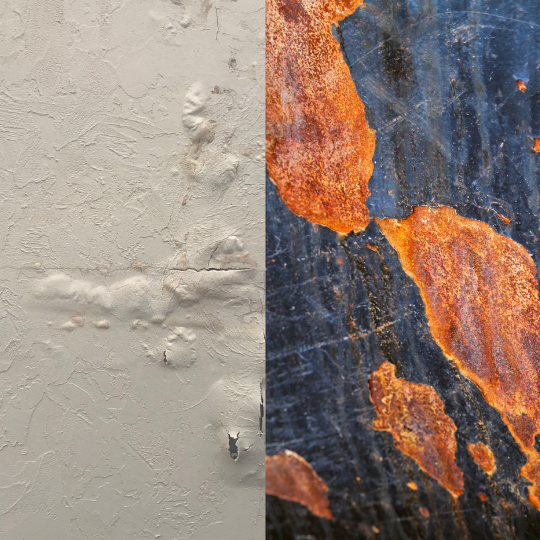Maximizing Material Compatibility and Surface Safety in Laboratory Bio-Decontamination
How CURIS System Avoids Corrosion and Rust While Ensuring Effective Decontamination
When it comes to laboratory bio-decontamination, material compatibility and surface safety are critical factors that can significantly impact your facility's return on investment (ROI). Corrosion, rust, and other forms of damage caused by harsh decontamination treatments can lead to costly repairs, replacements, and downtime. At CURIS System, we understand the importance of protecting your investments while achieving effective decontamination. In this blog post, we'll explore how our innovative solution maximizes material compatibility and surface safety, ensuring a strong ROI for your facility.
The Risks of Incompatible Decontamination Methods
Traditional decontamination methods, such as high-concentration hydrogen peroxide, chlorine dioxide, and formaldehyde, can cause significant damage to your laboratory's surfaces and equipment, including: 
- Corrosion and rust on metal surfaces
- Discoloration and pitting of stainless steel
- Failure of electronic components
- Bubbling of paint and building materials
Figure 1 on the right shows just a few examples of corrosion, rusting, and pitting resulting from traditional decontamination chemistries. Some facilities have even experienced these damaging effects and not realized their decontamination system was the cause. Is your facility experiencing any of these effects without explanation? You may need to examine your current decontamination method.
These issues not only compromise the integrity of your assets but also lead to increased maintenance costs and reduced productivity. The financial impact of using incompatible decontamination treatments can be substantial.
CURIS System: Prioritizing Material Compatibility and Surface Safety
At CURIS System, we've developed a revolutionary bio-decontamination solution that prioritizes material compatibility and surface safety without compromising efficacy. Our patented Pulse™ technology uses hybrid hydrogen peroxide™ (HHP™) decontamination at a remarkably low concentration of 80-139 ppm, minimizing the risk of pitting corrosion, rust, and other forms of surface damage.
"CURIS System, known for its unparalleled material compatibility..."
The ROI of Choosing CURIS System
Investing in a bio-decontamination system that prioritizes material compatibility and surface safety can yield significant returns for your facility:
- Extensive Material Compatibility: Our system is compatible with a wide range of materials, including aluminum, brass, ceramic, zinc-coated steel, galvanized steel, 316 stainless steel, BCF Triextra, PVC, and others, as demonstrated by our rigorous compatibility studies.
- Corrosion and Rust Avoidance: By using a low-consequence chemistry, CURIS System helps prevent pitting corrosion and rust on your valuable equipment and surfaces, extending their lifespan, reducing maintenance costs, and lessening the need for replacement.
- Surface Safety: Our safer* yet effective decontamination process ensures the integrity of your laboratory's surfaces, minimizing the risk of discoloration, pitting corrosion, and other forms of damage.
Achieve Efficacy and Protect Your Surfaces
Conclusion
In the face of evolving decontamination challenges, it's essential to choose a solution that not only effectively eliminates pathogens but also safeguards your facility's surfaces and equipment from damage.
CURIS System offers a material-compatible and surface-safe bio-decontamination system that delivers efficacy on microorganisms and a strong return on investment by extending the lifespan of your assets, reducing maintenance costs, and minimizing downtime.
Experience the peace of mind that comes with knowing your investments are secure while you focus on what matters most: your research.
Contact us today at 1-800-928-8708 or visit us online at curissystem.com to learn more about how CURIS System can help you maximize your ROI through material compatibility and surface safety in laboratory bio-decontamination.
*than 35-59% H2O2
References
- McAnoy AM, Soit M, Pantelidis S. Establishment of a Vaporous Hydrogen Peroxide Bio-Decontamination Capability. Australian Government Department of Defense, Defense Science and Technology Organization; 1994. DSTO-TR-1994.
- Office of Chemical Safety and Pollution Prevention. CURoxide Master Label [Internet]. United States Environmental Protection Agency (EPA). 2020. Available from: https://www3.epa.gov/pesticides/chem_search/ppls/093324-00001-20200716.pdf.
- M. Czarneski, K. Lorcheim. A Discussion of Biological Safety Cabinet Decontamination Methods: Formaldehyde, Chlorine Dioxide, and Vapor Phase Hydrogen Peroxide; 2011. Applied Biosafety Vol. 16, No. 1
- H. Luftman. Techniques for BSC Decontamination. DRS Laboratories, Inc. 2015. Available from: http://drslaboratories.com/wp-content/uploads/2015/08/Techniques-for-BSC-Decontamination.pdf
- “Maximizing Material Compatibility for Laboratory Biodecontamination.” Maximizing Material Compatibility for Laboratory Biodecontamination, February 6, 2024.
